goat's milk is inappropriate for infants due to its low content of
 Goats milk is inappropriate for infants due to its low content of a iron b | Course Hero
Goats milk is inappropriate for infants due to its low content of a iron b | Course HeroWarning: The NCBI website requires JavaScript to operate. Pipeline, Pipeline, Pipeline, Pipeline, Pipeline, Pipeline, Pipeline, Pipeline, Pipeline, Pipeline, Pipeline, Pipeline, Pipeline, Pipeline, Pipeline, Pipeline, Pipeline, Pipeline, Pipeline. Sechenov First Moscow State Medical University, 119991 Moscow, RussiaMauro Calvani5Department of Pediatrics, S. Camillo-Forlanini Hospital 001 Massimo Landi7National System of Pediatric Health, 10135 Turin, Italy Thulja Trikamjee8Alergy & Immunology Unit, University of Cape Town Lung Institute, 7700 Cape Town Milk is usually made from cow's milk and represents the first food introduced in a baby's diet when breastfeeding is not possible or insufficient to meet nutritional needs. Very recently, increased awareness of allergy and intolerance of cow's milk protein, and a greater preference to vegan dietary habits have influenced parents in choosing frequently of substitutes of cow's milk for children, which include other types of mammal milk and plant-based dairy beverages. However, many of these dairy alternatives do not necessarily address the nutritional requirements of infants and children. There is a strong need to promote awareness of qualitative and quantitative nutritional compositions of different formulas of milk, in order to guide parents and medical providers by selecting the best option for children. In this article, we seek to review the different compositions in terms of macronutrients and micronutrients of milk from different mammal species, including special dairy formulas indicated for allergy to cow's milk, and alternatives to vegetable milk.1. IntroductionThe milk of cow (CM) and dairy products represent basic foods for human nutrition and development, being unique sources of energy, nutrients, calcium, proteins and vitamins. The CM formula is generally the first food introduced in the diet of babies when breastfeeding is not possible or insufficient to meet nutritional needs. It should be noted that CM and dairy products remain an essential part of lifelong nutrition, being recommended as a food group essential for daily consumption. The average composition of CM is 3.5% of proteins (80% proteins, 20% serum proteins), 3–4% lipids (triglycerides), 4.6% of carbohydrates (lactose), 1% of mineral salts (calcium, phosphorus, potassium, magnesium, sodium), vitamins (especially B1, B2, B6, retinol, carotenos, 88%). Although the CM is the most widespread type of milk, which represents 83% of world production, the use of milk from other animal species has increased in recent years. Buffalo milk represents 13% of the world's production of milk and dairy products, while the contribution of goat milk (2.3%), sheep (1.4%) and camel (0.3%) is limited. Other species, such as reindeer, yak, elk, ox musk, flame and alpaca, represent 0.2% of the world milk market. Very recently, increased awareness of the allergy to cow's milk proteins (CMPA) and intolerance, and increased prevalence of vegan dietary habits have influenced parents to frequently choose substitutes for cow's milk for children, which include other alternatives to mammal milk and vegetable milk drinks []. However, many of these dairy alternatives do not necessarily address the nutritional requirements of infants and children. The nutritional composition of milk alternatives to the CM has received little attention from scientific research. The lack of such information is a dissatisfied need, as these milk alternatives have the potential to contribute to the food security, health and nutrition of a population []. These milk alternatives vary in their composition of macro and micronutrients []. In terms of macronutrients, you can distinguish milk rich in proteins, fats and lactose, such as reindeer and elk, from those characterized by low protein, fat and high lactose content, such as mare and donkey milk (). Lactose is the main carbohydrate of milk, and is involved in the intestinal absorption of calcium, magnesium and phosphorus, in the use of vitamin D, in the development of the brain and is a source of energy. As much as 30% of the CM energy, about 40% of the breast milk energy and 53-66% of the echin milk comes from the lactose [].Table 1Food composition of different types of animal milk. Source: Food and Agriculture Organization of the United Nations (FAO) [] HumanCowBuffalGoatSheepYakMareDonkeyDromedaryCamelMithunMusk oxLlamaAlpacaReindeerElkEnergy (kcal)70629966100483756122857871196129Water (g)87.587.783.287.182.689.890.878.683.684.783 Minerals Calcium (mg)32112191118190129959111415488 195 320280Iron (mg) 0.10.20.30.10.60.1 0.2 0.3Magnesium (mg)3111214181074138 15 1923Phosphorus (mg)1491185100144106586186132147 122 270276Potasy (mg)51145112202148955150151186 120 156111Sodium (mg)174247443929162266 27 4878Zinc (mg)0.20.40.50.30.60.90.200.60.7 1.10.6Copper (mg)0.1 0.10.100.2 0.3Selenium (μg)1.81.8 1.11.7 11Manganese (μg) 8 1818 106 1 Vitamins Retinol (μg)6035694564 Carotene (μg)716 13 Vitamin A (μg RE)6137694864 97 Vitamin E (mg)0.080.080.190.050.11 0.15 Thiamine (mg)0.010.040.050.060.07 0.030,06 0.01 Riboflavina (mg)0.040.20.110.130.34 0.020,03,060,12 Niacin (mg)0.180.130.170.240.41 0.070.09 Pantheonic acid (mg)0.220.430.150.30.43 Vitamin B6 (mg) 0.040,330.050,07 0.05 Folate (μg)58.50.616 Biotin (μg) 2132.52.5 Vitamin B12 (μg)0.050.510.40.070.66 Vitamin C (mg)512.51.14.6 4.3 3.83 Vitamin D (μg)0.10.2 0.10.2 1.6 In this review, we seek to review the different compositions in terms of macronutrients and micronutrients of milk from different mammal species, including special dairy formulas indicated for CMPA, and plant-based dairy alternatives. 2. Mammalian Milk Alternatives2.1. MilkBuffalo Milk contains more than double CM fat (7.5 g/100g vs. 3.3 g/100g), which results in higher energy content; the percentage of saturated fats (65–75 g/100g of total fatty acids {FA} is comparable to that of CM. The high-fat content makes buffalo milk especially suitable for the production of dairy products (e.g., 1 kg of butter is produced with 10 kg of buffalo milk, compared to 14 kg of CM). Buffalo milk has protein levels slightly higher than those of CM, while the amount of lactose is similar [].2. Goat MilkGoat's milk has a nutritional composition very similar to CM in terms of saturated fats and trans-FA quantity. Goat milk is plentiful in short chain, and medium chain FA (6-10 C atoms), present in quantities even double CM; these FA metabolize differently than those with a long chain and are rapidly available sources of energy. In addition, the small size of fat cells makes goat milk easier to digest. The typical "goat harbinger" seems to be related to the presence of branched chain fatty acids with less than 11 C atoms. As for carbohydrate content, goat milk contains changing amounts of lactose, depending on the animal's diet, and high levels of oligosaccharides (the content of sialic acid is four times greater than that of CM). The amount of goat milk protein is comparable to that of CM. As for the composition of micronutrients, goat milk has greater retinol content, lower levels of vitamin B12, significantly lower levels of folate, and higher levels of free amino acids (especially taurine) compared to CM [].2.3. The average size of fat cells is lower in the milk of the sheep than in CM, which facilitates digestion. It has high levels of protein (5.6 g/100 g) and lipids (6.4 g/100 g); among the most common species, only buffalo milk has more fat content than sheep. The FA profile of sheep milk is very similar to that of goat milk: five FA represents more than 75% fat, and the FA saturated content (65–75 g/100 g of total FA) is comparable to that of CM, buffalo milk and goat milk. The sheep milk also contains more lactose than human milk, CM and goat milk. In addition, sheep milk contains lower levels of sodium and potassium than humans and CM, while most other minerals are present in higher amounts. Finally, sheep milk has a higher level of retinol than goat and CM. Like goat milk, sheep milk also contains amino acid taurine [].2.4. Caballo and donkey milkThe seas and donkeys produce a similar type of milk, without significant differences in proteins, lipids, lactose and mineral salt content. The composition of horse and mare milk is more similar to that of breast milk due to high levels of lactose, low levels of protein, caseins (40-45% of total proteins) and mineral salts. However, it should be noted that the fat content of the horse and donkey is significantly lower than breast milk with the consequent lower energy content. These milk alternatives have lower protein and fat content than CM with high levels of polyunsaturated fatty acids (PUFA) and low levels of Saturated FA. It contains alpha-linolenic acid (ALA, Omega 3) and linoleic acid (LA, omega 6 series), which are essential FA and precursors of docosahexaenoic acid (DHA) and araquidonic acid (AA), respectively. The high levels of these FA precursors are likely attributable to the fact that maras and donkeys are monogastric animals so that FAs are not hydrogenated prior to absorption, as happens in ruminants, causing them to be transformed into Saturated FA []. The differences between mare and donkey milk are as follows: Donkey milk does not contain trans-FA and linoleic conjugated (CLA); Mare milk contains trans-FA and CLA in insignificant amounts; Mare's milk contains up to 15 mg of ascorbic acid/100 g, much more than CM. Trans-FA is naturally found in foods derived from ruminants (dairy and dairy products). They can be unsaturated and polyunsaturated with at least a double link in trans-configuration. The acid of the vaccine (C18: 1, trans-11) is one of the most abundant of the trans-FA present in CM and breast milk (according to the mother's diet); it is the intermediate precursor of the conjugated linoleic acid (C18: 2, cis-9, trans-11). These natural transFAs have different properties compared to trans-FAs from partially hydrogenated vegetable oils and have critical immune regulation functions. 2.5. Dromedary and Camel MilkThe drug and camel have an important social and nutritional role in arid and semi-arid areas as a source of milk for the population; they are called semi-ruminants because they have a stomach with three compartments (instead of 4) with functional properties similar to those of the ruminants. Alternatives of drug and camel milk have similar amounts of lactose, but different amounts of lipids (higher in camel milk). Both contain 1–2 g of ALA and LA/100 g of total FA. The drug milk has a very similar composition to CM, with slightly lower saturated content (60 g/100 g total FA) and higher monounsaturated fatty acids (MUFA). Milk milk has a saturated fatty acid content less than that of the cow (50 g/100 g total FA). The most important feature of camel and dromedary milk alternatives refers to protein fraction: β-lactoglobulin levels are not measurable (similar to breast milk); the most common serum protein is α-lactalbumin; the main caseine is β-caseine (similar to breast milk). These characteristics give these two types of milk greater digestibility and lower incidence of allergies compared to the CM. In addition, both alternatives to milk have greater amounts of bioactive and antimicrobial substances (lisozyme, lactoferrin, immunoglobulins) than CM milk and buffalo. Vitamin C levels in the drug milk usually range from 2.5 mg/100 g to 18.4 mg/100 g, depending on the race. However, it should be taken into account that camel and dromedary vitamin C is more heat-sensitive than that found in CM and can be reduced by approximately 27% when milk is pasteurized [].2.6. The ox is an Arctic mammal, belonging to the Caprinae subfamily, as goat and sheep. Limited data are available on the composition of this milk. Of what is known so far, the mastic ox milk contains more proteins and lipids (5.4 g/100 g of lipid, but not a high amount for an arctic animal) compared to the CM. The amount of lactose and water is lower, while the mineral salt content is more than double CM (1.6 g/100 g vs 0.7 g/100 g) [].2.7. Yak MilkUnique bovine bred in the mountains of China, Mongolia, Russia, Nepal, and Uzbekistan. The different plants in these regions produce Yak powder milk for domestic use. The composition of yak milk is very similar to that of buffalo milk, which differs only in the total content of proteins. As in buffalo milk, yak's milk fat content is much higher than that of CM. The predominant FA in yak milk is the same as in cow milk and buffalo, and only a small amount of PUFA (2 g/100 g of total FA) is reported. Saturated fats represent about 65 g/100 g of total FA. The short-chain FA content is low, and small amounts of CLA have also been reported. In addition, in yak milk, compared to CM, there is an almost double amount of β-lactoglobulin, and lactoferrin levels are 2-6 times greater [].2.8. Mithun MilkMithun is mainly in the mountainous regions of India, Myanmar, Bangladesh, where it plays an essential role in the economic, social and cultural life of local populations. There are few available studies on the composition of this milk. It contains greater total fat content (8.9 g/100 g) and total protein (6.5 g/100 g) than CM (3.3 g of fat and 3.3 g of protein/100 g of milk); this is due to the tonnage of this species and its low yield in milk production [].2.9. Milk of Flame and Alpaca There is little information available about alternative flame and alpaca milk. Both species represent a nutritional and economic resource that has not always been exploited by people living in the mountainous areas of South America. Alpaca milk is more abundant in proteins and mineral salts than the milk of other camels and CM; there is no study on its lipid composition. Flame milk does not contain measurable levels of β-lactoglobulin. As for the lipid profile, it has saturated, monounsaturated and polyunsaturated fat proportions comparable to those of CM; it contains trans-FA (3 g/100 g total FA) and small amounts of CLA (0.4 g/100 g total FA) [].2.10. The milk of Reindeer and Elk Reindeer and elk are known for their dense milk, with creamy consistency and with very high levels of fat and protein. In reindeer milk, total fat can be more than six times greater, and protein content is four times greater than that of CM. The high protein content also implies a high content in amino acids, in amounts that are 2–6 times those present in CM. This aspect suggested its possible use as a protein supplement, especially for athletes. About 80% of reindeer milk proteins are represented by casein (similar to CM in this sense). The FA breast milk profile is similar to that of CM: the predominant FA is C16: 0, C18: 1, C18: 0 and C14: 0; it also contains 3 g of trans/100 g fatty acids of total FA and 2 g of LA/100 g of total FA. As for Elk's milk, no information has been found on the protein profile and very few in the lipid profile: the amount of saturated fats is lower than that of CM, while PUFA's is higher. It also has more linoleic acid than reindeer milk. Both milk alternatives have low levels of lactose (about 50% of the value of CM), have a high content of mineral salt, and high values of calcium, sodium and phosphorus have been reported in elco milk [].2.11. Milk Micronutrients reports the macro and micronutrient compositions of the different types of mammal milk alternatives. In particular, when comparing the different types of milk, it can be observed that common elements are iron deficiency, sodium and good calcium intake. Elk's milk contains significant amounts of selenium, while buffalo milk, goat, sheep and camel are good sources of vitamin A. The sheep's milk is rich in riboflavin while the cow, goat, buffalo and camel's milk have inferior sources, though suitable. Buffalo milk has a high content of vitamin B6 and has good biotin content. Oveja, mare and dromedary milk can be considered as sources of vitamin C, which contain respectively an average of 4,6, 4.3 and 3.8 mg/100 g; camel milk also has a higher content of vitamin D [].Box 1Key Points: Mammalian Milk Alternatives. Buffalo milk has higher amounts of fat and therefore gives more energy than cow milk (CM). The protein level is slightly higher than that of CM, while the amount of lactose is comparable. Goat milk has amounts of lipids and proteins similar to CM. It is vitamin B12 and folate deficient. The sheep's milk has higher amounts of lipids, proteins and lactose than CM.The Horses' milk (donkey, mare) has similar amounts of protein and lactose such as that of breast milk, but a lower concentration of lipids (qualitatively contains, however, polyunsaturated fatty acids (PUFA) than saturated. Mare's milk has a higher content of vitamin C.The drug and camel milk has a composition similar to CM. As for protein content, β-lactoglobulin levels are not measurable (similar to breast milk); the most common serum protein is α-lactalbumin; the main caseine is β-caseine (similar to breast milk). Camel's milk also has a higher vitamin D content. Yak's milk has a composition similar to buffalo milk. Compared to CM, yak milk has an almost double amount of β-lactoglobulin, and 2 to 6 times higher levels of lactoferrin. Breast milk and elk have greater amounts of proteins and lipids and less lactose than CM (about 50% less). In conclusion, these mammal dairy alternatives are not suitable for child nutrition. 3. Cow Milk Allergy Protein: Special formulas and CM milk alternatives is the most common dietary allergen in childhood. The long-term prognosis for most infants with CMPA is favorable, with 80–90% natural tolerance to CM for 6 years. The estimated prevalence of CMPA in the first year of life is 1.5 to 3 per cent and decreases to less than 1 per cent in six-year-olds and an incidence of 0.1 to 0.5 per cent in adulthood [,]. The current treatment of the CMPA is based on the strict elimination of milk and dairy from the diet and emergency treatment in case of reactions by accidental exposure []. The elimination of CM and dairy from a child's diet carries greater nutritional risk, as these foods represent the main source of proteins, fats, calcium, phosphorus and vitamin B12 for babies [,]. Breastfeeding is the best option if the CMPA occurs during this period, since it is considered the optimal source of child nutrition [,]. Mothers should be encouraged to breastfeed and do not require dietary dairy restrictions unless symptoms are breastfeeding []. However, where breastfeeding is not possible or insufficient, replacement with an appropriate hypoallergenic formula is compulsory in children under two years of age [,] (). Table 2General characteristics of formulas for allergy to the protein of the cow (modified of Fiocchi A., et al.; World Allergy Organ J 2016 []).EnergySimilar to human milkProteinsInsinuate the normal recommended formulas, but the milk protein of cow is hydrolytic or whole proteins other than the proteins of the human milk. Extensively Hidrolyzed Cow's Milk Formula An extensively hydrolyzed CM formula (EHF) is the result of a complex manufacturing process using extensive enzyme hydrolysis and ultrafiltration CM proteins (i.e. serum or casein proteins). Currently, EHFs are recommended as formulas of choice for the treatment of CMPA in most cases [,]. EHFs are nutritionally adequate and well tolerated. The main inconveniences of the HF are a bitter taste and a high financial cost (two to three times higher than standard milk formulas) []. Notably, in 5–10% of cases, EHF can cause allergic reactions, due to the presence of short and specific peptide sequences, with potential immunogenic capabilities. For this reason, the EHFs are not recommended for babies with a history of anaphylaxis or allergic reaction to the CM while they are exclusively breastfeeding, which instead must receive a formula of amino acids (AAF) [,].3.2. Amino acid base formula AAFs provide proteins in the form of free amino acids and therefore are considered the only formulas of completely non-allergenic milk. AAFs would be the right first-line formulas for all children with CMPA, but they are generally reserved, due to their higher and lower palatability [], for those babies with one of the following conditions: lack of response or reaction to the symptoms of EHF; enterophyry while breastfeeding exclusively; false growth, in particular with multisystem participation (page and/or skin) and multiple food allergies Soy-based formulas are well tolerated in infants with CMPA. Many nutritional deficiencies with these formulas have been reported in the past. The current soy formulas are complemented by appropriate amounts of amino acids such as methionine, taurine and carnitine. They are not deficient in iron, zinc, calcium, phosphorus []. Aluminum content is more than 50 times higher in soy formulas than in breast milk, but this is even more true for soy hydrolyzed formulas (80 times higher). However, 95% of the ingested aluminum is not absorbed in the intestine, and the kidney excretes 5% absorbed, so there are no differences in plasma aluminum levels in children fed with different formulas []. Similar considerations are valid for manganese. Soy formulas used to contain phytosanitary that were blamed for their ability to chew, avoiding proper absorption of micronutrients. Today, however, the phytos are almost completely eliminated from soy formulas. There are two potential problems for the use of soy formulas. One is the concern for the possible hormonal effects on the presumed reproductive system due to isoflavones present in soy protein. To date, data do not support those concerns []. The other problem to consider is the use of transgenic soy in formulas. The United States Department of Agriculture records that up to 93 per cent of soybean crops are GMOs. Because of these nutritional disadvantages, greater allergenicity and less tolerance, the European Academy of Allergy and Clinical Immunology (EAACI) and the European Society of Pediatric Gastroenterology Hepatology and Nutrition (ESPGHAN) recommend not to give soy to babies with CMPA during the first 6 months of life and to children who have experienced gastrointestinal symptoms [,].3.4. Hidrolyzed Based on rice FormulaRice is one of the least allergy foods, reacting in less than 1% of allergy children. It has no lactose or phytoestrogens. For this reason, hypoallergenic formulas containing hydrolyzed rice proteins have been developed. These formulas have been used for more than a decade in several westernized countries. The composition of rice proteins is naturally different from bovine proteins: although they are rich in essential amino acids, three of them do not reach the respective value contained in breast milk. For this reason, to ensure nutritional safety for allergic babies to CM or soybeans, the partially hydrolyzed rice protein (HRF) formulas are supplemented with lysine, threonine, tripptophan, carnitine and taurine, iron and zinc []. Although several studies have shown that HRF is nutrition and allergy insurance, it is still recommended as a second option []. They can be effective in patients who find unpleasant or untolered HF and in subgroups of babies with severe forms of CMPA. As to the arsenic-related issue under the commonly used HRH, available evidence suggests inorganic arsenic levels within the limits of the European Food Security Authority (EFSA)/World Health Organization (WHO) marketed by HRF in Italy, France and Belgium [].3.5. In infants diagnosed with CMPA, daily intake of calcium and vitamin D should be regularly evaluated to ensure adequate amounts. The recommended dietary intake (RDI) for calcium and vitamin D is 200 mg and 400 international units (IU) (10 μg) per day in the first six months of life; 260mg and 400 IU in infants between six and 12 months; and 700 mg and 600 IU between the first and third year of life []. Most special formulas are supplemented with calcium and vitamin D in varying quantities. It is necessary to evaluate from time to time the content of calcium and vitamin D in the amount of milk given and the diet of the remaining baby. In case the consumption of the special formula is less than 500 mL/die supplement with 500 mg/die calcium is necessary []; 400 IU of vitamin D should be given birth to first year of life. It is then appropriate to continue the supplementation with 600 IU/die.3.6. Inadequate breast milk substitutes in children with cow milk allergy In infants with CMPA diagnosis, low palatability and high cost of recommended hypoallergenic formulas are increasingly influencing parents towards choice often like other types of mammal milk. However, these milk alternatives are not always safe or nutritionally appropriate. Some studies have suggested that goat milk is less allergenic than CM. Although they contain the same CM proteins, some of them in goat milk differ in their genetic polymorphisms that result in less allergenic potential []. However, several studies have shown that goat milk is not suitable for children with CMPA because of cross-reactivity between the proteins of casein contained in CM and goat milk. Therefore, international guidelines recommend not to use goat milk as a substitute for the CMPA []. Recommendations similar to sheep milk are also applied due to the risk of cross-reactivity with CM []. Homologies in amino acid composition could justify the cross-reactivity observed between proteins of different animal species. On the other hand, the phylogenetic difference could be responsible for the failed recognition of camel proteins circulating IgE and monoclonal antibodies []. In addition, a recent study showed that camel and cow milk has a low cross reactivity, indicating a low similarity of proteins. Results show that camel milk, nutritionally modified, could be a promising alternative to hypoallergenic formulas based on CM [].Box 2Key Points: The Allergy to Protein Cow Milk: special formulas and milk alternatives. Caseina or serum protein-based hydrolysed formulas (HF) are recommended as a choice formula for babies with allergy to cow's milk protein (CMPA), without a history of anaphylaxia or symptoms while breastfeeding exclusively. The soy formula can be used as a second option in infants with CMPA over six months of age and without gastrointestinal symptoms. The rice-based hydrolyzed formula can be used as a second option in CMPA babies who reject an EHF. In children with CMPA mediated by IgE with high risk of anaphylactic reactions (the main story of anaphylaxis and currently not using an EHF), amino acid formula should be suggested rather than an EHF. Goat and sheep milk are substitutes for unsuitable milk for babies with CMPA. As for milk with low cross-reactivity (i.e., equine, mare and donkey milk), they are not suitable during the first year of life in infants with CMPA if they are not "nutritionally modified". Even if modified, the substitute for each cow's milk should be nutritionally adequate and tested in clinical trials. 4. Plant-based beverages Over the past decade, the consumption of pro-capita MC has gradually decreased, together with the increase in the availability and consumption of plant-based beverages []. Non-hazardous beverages continue to show a growing trend of sales in westernized counties because foods labeled as natural are perceived as the healthiest and most consumer-friendly nutritional option [,]. These beverages are liquid extracts of legumes, oil seeds, cereals and pseudocereals that simulate the appearance of CM and consistency []. However, according to regulation 1308/2013, it is not possible to use the term "milk" for plant-based beverages. Only what is obtained by milking can be called "milk"; therefore, except for almond and coconut milk, all other products can be called "bebierne" or "bebida". In terms of nutritional properties, these beverage characteristics are different from those related to the common CM or breast milk. It is not yet clear whether your consumption may be associated with any beneficial effects on health, but it is well known that an inadequate replacement of formulas or CM (after the first year) with vegetable beverages may be related to large nutritional gaps and Kwashiorkor in younger children, especially if the plant-based drink is the only, or predominant infant diet [,,,]. The main reasons that have affected the choice of consumers to vegetable beverages over time are different: medical reasons (intolerance of lactose and CMPA), hypercholesterolemia, more preference to vegan diets, unfounded concerns about antibiotics and residues of growth hormones in CM and sense of a healthier choice; for these reasons it has been estimated that 15% of the European population avoids dairy products.] According to the definition, plant milk replacements are colloidal suspensions or emulsions, including dissolved and disintegrated plant materials: these are traditionally prepared grinding different raw materials in suspension and then filtering to remove larger particles []. Plant-based beverages can be classified into five categories: cereals (meat, rice, corn, orthography); legumes (soy, peanut, lupina, cowpea); walnut (almond, coconut, hazelnuts, sunflower); pseudocereals (kinoa, teff, amaranth). 4.1 Soybean beverages The use of soy milk was reported about 2000 years ago in China. Soy milk was the first plant-based milk to provide nutrients to a population where the milk supply was insufficient []. Beverage contains carbohydrates and fats much lower than CM. Therefore, it has a lower energy value, while the supply of proteins is also lower. As for the lipid profile, it contains low saturated levels, while it represents a good source of trans fats, MUFA and PUFA (ALA and LA). As for micronutrients, it contains isoflavones probably responsible for the beneficial effects of soy against cancer, cardiovascular disease and osteoporosis; phytosterols widely recognized for their properties that lower cholesterol []. Soybean beverage shows a lack of calcium and vitamin B-12; for this reason, these micronutrients are often supplemented. The benefits of eating soy milk include the absence of lactose and cholesterol, high nutritional value, higher protein quality compared to other drinks, and high digestibility. However, these drinks should not be given to the youngest children (close years of life). In this regard, it is considered necessary to use a food journal of 3 or 7 days to define the intake of micronutrients according to age needs. Unfortunately, a well-known disadvantage of soy milk preparation is a characteristic flavor of beany []. In addition, soy drink cannot be used in individuals allergic to soy proteins, as it may result in a possible flatulence. 4.2. Almond Milk Almond milk, compared to bovine milk, has less protein content while the amount of carbohydrates and fats is almost compared to those of CM. As for the lipid profile, it has less saturated levels and higher levels of trans fats, MUFA (oleic acid) and PUFA (ALA and LA). As for almond milk micronutrients, it has good levels of vitamin E, an important antioxidant and manganese. Almonds are also a rich source of other nutrients such as calcium, potassium, magnesium, iron, selenium, copper and zinc []. This nutritional profile makes it inadequate as the only food in the baby's diet. If it is given as a substitute for milk, it would be essential for fortification by adding critical micronutrients such as calcium and B12, based on the growing need. The declared benefits of almond milk are the power that decreases cholesterol and the possible prebiotic characteristics, which can determine the growth of bifidobacteria []. Generally, this drink is nutritionally better than other plant-based beverages, and represents a good source of trans fat and vitamin E but also has inconveniences: the prevalence of nut allergies and the high price limit of consumption []. Despite its characteristics, it cannot be considered as a substitute for milk, but as a drink that will be given to children during the time of snack. 4.3. Rice Drink Rice is rich in simple sugars, so energy is readily available. It has a lower level of fat compared to other drinks: it does not contain MUFA saturated but mainly unsaturated and PUFA. In addition, in relation to protein content, rice drink has the least amount of protein compared to other plant-based beverages. Micronutrients, calcium, magnesium and iron levels are comparable to CM, while rice drink has more vitamin A and E. It is necessary to briefly mention the incorrect use of this drink in babies with CMPA, as parents are often not aware of the fundamental difference between rice and beverage formula, which can have significant effects on growth and development. In addition, high levels of arsenic have been detected in rice beverages used by children, as recently noted by the European Society of Pediatric Gastroenterology Hepatology and Nutrition (ESPGHAN) Nutrition Committee (not in rice-based hydrolysed formulas), so it is recommended to avoid the consumption of rice-based beverages in younger babies and children [].4.4. It is, in fact, used quite often as a thickener to make a whole body dish []. This "milk" has a high fat content, so it is a high-energy drink: in particular, the lipid profile is characterized by high saturation levels, especially hyaluronic acid c, and by low levels of trans fat (this limits the use of this milk). As a counterpart, there is a lower content of carbohydrate and fiber proteins. As for micronutrients, there are high levels of potassium, magnesium, iron and zinc, with a good amount of vitamin E and C. As for hyaluronic acid, being a saturated FA, it is important to monitor the daily consumption of trans fats. In more detail, this saturated FA is present in breast milk and has been related to brain growth, the stimulation of the immune system and the elasticity of the vessels. It should be mentioned that beverages on the market usually have a small amount of coconut milk, being extremely diluted and with simple added sugars, which means a lipidic profile considerably lower than "real" coconut milk. 4.5. Meat drink The oatmeal drink contains less fat, especially PUFA, and proteins, but a better amino acid profile than other drinks. This cereal takes great attention by the presence of fiber, phytochemicals (antioxidants and polyphenols), and its high nutritional level. Bentaglucan, a soluble fiber with the ability to increase the viscosity of the solution, may delay the time of gastric emptied, which increases the time of gastrointestinal transit, thus reducing blood glucose and cholesterol levels (total cholesterol and LDL). On the other hand, oatmeal contains a significant amount of foetic acid, an antinutrient (which interferes with some nutrient absorption) and lack of calcium, for which this drink must be fortified. 4.6. Plant-based beverages against cow milk It is crucial to focus on the differences between the essential characteristics of plant-based beverages compared to the CM (). As for protein content, only soy milk values are similar to those of CM, with protein content ranging from 2.9% to 3.7%; all other beverages show deficient protein levels, but quinoa, hemp and oatmeal are the only ones showing a ratio1% content. Vegetable proteins are generally of lower nutritional quality compared to animal proteins due to the limitation of amino acids (sorcertain lysine, legume methionine) and poor digestibility []. The nutritional inferiority of these beverages poses a risk, especially when younger children are given as substitutes for CM, without knowing the peculiar differences []. In this regard, in recent years there has been inappropriate consumption of these drinks as alternatives to the child formula, especially in the case of the CMPA. It is worth raising some findings: its composition does not follow European guidelines; they are low energy drinks, and with proteins, vitamins and insufficient mineral levels for early childhood. These drinks can cause a serious nutritional deficit in babies. In fact, between 2008 and 2011, there were nine cases of severe nutritional deficiencies caused by the consumption of vegetable beverages (from four to 14 months). The beverages involved in these cases were rice, soy, almond and chestnut; three of these nine serious cases of malnutrition also showed severe hypoalbuminemia (Table 3 Nutritional Comparison (per 100 g) between cow's milk vs. selected vegetable milk alternatives *. Whole Cow Diet (FAO/IEO) Soy-Based Beverages (IEO) Coconut Mile (IEO) Almond Milk (IEO) Rice-Based Beverages (USDA)Energy, kcal62322365647Total Proteins (g)3.32.92.31.3023.28Totalholes (g) Fatty acids Total Saturates (g)2.110.2121.140.280Lauric acid, g)0.11 10.580 Myristic acid, g)0.37 4.180 Palmytic acid, g)0.92 2.020.21 Stearic acid, (g)0.39 1,230.06 Total Monounsaturated (g)1.10.331.012.370.625AcidOléic (g)0.930.321.012.34 Total Polyunsaturates (g)0.120.830.260.650.313Acid linoleic (g)0.070.730.260.63 Linolenic acid (g)0.050.100.02 Micronutrients Calcium (mg)112131614118Sodium (mg)423215139Potasy (mg)1451202634727Magnesium (mg)11 371611Iron (mg)0.10.41.60.20.2Zinc (mg)0.40.20.670.160.13Vitamin A (μg)3710063β-carotene (μg)16 00 Total leaflets (μg)8.5191632Vitamin B12 (μg)0.5 000.63Vitamin B6 (μg)0.040.070.030.10.04* Reference: European Institute of Oncology (IEO); Food Composition Database for Epidemiological Studies in Italy (BDA); Food and Agriculture Organisation of the United Nations (FAO); U.S. Department of Agriculture (USDA). As for the lipid profile, plant substitutes generally have low levels of Saturated FA, except coconut milk []; despite this, some products show good levels of energy production similar to the entire CM, due to sugars and other carbohydrates []. In addition, some of these beverages contain added sugars and sweeteners, and there is a difference regarding the carbohydrate profile: the absence of lactose and galactous in vegetable drinks []. A recent research finding has led to a different glycemic index (GI) in plant-based beverages that point to high levels in rice and coconut beverages (GI 96 96) due to a high content of glucose; oat drink (GI = 59) due to bglucan content; low levels for different soybean beverage brands (GI = 47–61) and almond milk (GI = 49–64). In contrast to others, rice-based beverage also showed a high glucaemic level []. Because of low proteins, vitamins (B12, B2, D and E) and mineral content (especially calcium) in most plant-based beverages, they usually need to be fortified. However, plant-based fortified beverages and CM differ significantly in nutritional properties, as some nutrient bioavailability may vary considerably []. For all these reasons, the CM should not be removed and replaced with these beverages in younger infant diets, unless in the presence of medical conditions []. Therefore, it is mandatory to remember that every "milk" or "bebida" has peculiar features with potential benefits and disadvantages. Box 3Key Points: Plant-based beverages. All plant-based beverages should not be used as a substitute for cow milk (CM) in children Soybean drink contains less sugars and fats, especially trans fats, compared to CM. It contains isoflavones and phytosterols. It lacks calcium and vitamin B12. It does not contain cholesterol and lactose. Children should not be given allergic to soy proteins. Almond milk is rich in vitamin E and trans fats, and can be given as a drink during snack time. The rice drink has less lipids (especially polyunsaturated fatty acids) and proteins than CM. It has a higher vitamin A and D content. It contains arsenic, so it is not recommended in infants and young children. Coconut milk has greater amounts of fat, potassium, magnesium, iron, zinc, vitamin C and E and a lower amount of proteins, sugars and fiber compared to bovine milk. The oatmeal drink has a lower amount of fats, proteins and calcium than CM. It contains an antinutrient that makes it difficult to absorb some nutrients. It has properties that lower cholesterol. 5. ConclusionsThe MMC and dairy products are an integral part of the nutritional requirements of a growing child. The emergence of allergies and intolerances to dietary preferences CM and vegans has led to greater need and use of substitutes for CM, including other types of mammal milk and vegetable dairy drinks. However, many of these dairy alternatives do not necessarily address the nutritional requirements of infants and children. Therefore, it is important to select the most suitable option for each patient. In addition, it should be noted that the types of unmodified cow milk and other mammals, as well as plant-based beverages, are not recommended for healthy babies in the first year of life, which should instead receive the appropriate formula CM or goat based on milk []. Finally, there is a strong need to promote awareness of qualitative and quantitative nutritional compositions of different dairy formulas, in order to guide medical providers to select the best option for children with CMPA. Author's contributions E.V., S.D., L.C., P.C. and M.C. made a substantial contribution to the conception, design and acquisition of data; E.V., S.D., L.C., P.C., M.C., S.P., A.M., M.L., T.T. and D.G.P. drafted the important manuscript and revised. All authors gave the final approval of the version to be published. FundingThis research did not receive external funding. Conflict of interest The authors declare that there is no conflict of interest. ReferencesFormats: Share , 8600 Rockville Pike, Bethesda MD, 20894 USA

Goats milk is inappropriate for infants due to its low content of a iron b | Course Hero

Goats milk is inappropriate for infants due to its low content of a iron b | Course Hero

Goats milk is inappropriate for infants due to its low content of a iron b | Course Hero

Goat Milk for Babies: Safety, Dangers, for Eczema, More

PDF) Fresh Goat's Milk for Infants: Myths and Realities-A Review

PDF) Goats' milk of defective αs1-casein genotype decreases intestinal and systemic sensitization to β-lactoglobulin in guinea pigs

Goat vs Cow Milk Formula for Babies: Is Goat Milk Better Than Cow's Milk? - The Baby Swag
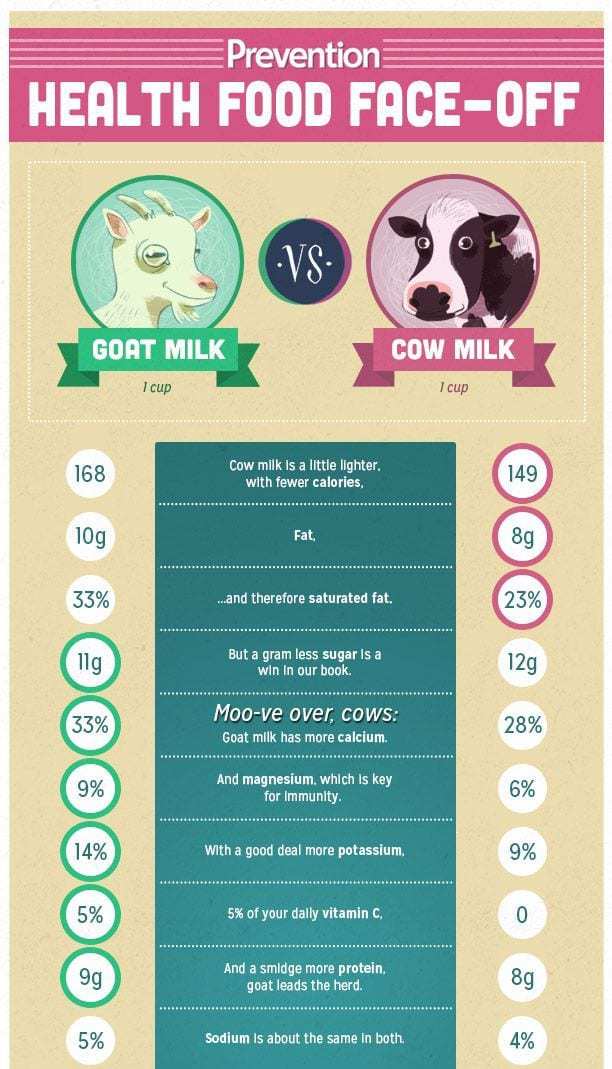
Goat vs Cow Milk Formula for Babies: Is Goat Milk Better Than Cow's Milk? - The Baby Swag
Choosing Appropriate Infant Milks and Formulas
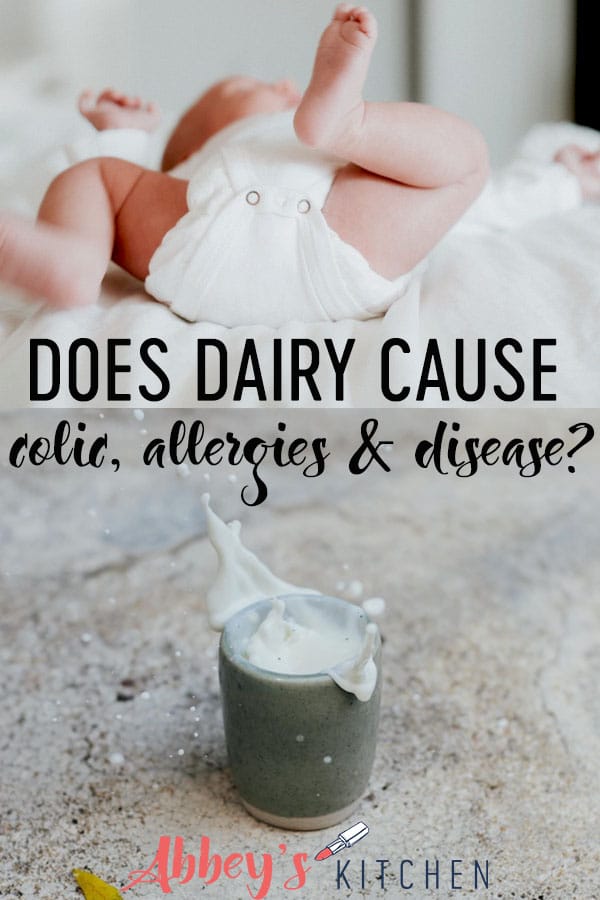
Goat Milk vs Cow Milk vs Sheep Milk for Babies | Does Dairy Cause Colic, Allergies & Disease? - Abbey's Kitchen
.jpg?mw=1600)
Mom Talk: Should I Give My Baby Goat's Milk?

PDF) Lysozyme transgenic goats' milk influences gastrointestinal morphology in young pigs

Goat Milk For Babies: When To Give And What Are Its Benefits

PDF) The quality of goat milk and hygiene management practices on farms in Vojvodina

Is Goat Milk Easier to Digest? — Fortified Family

PDF) Adverse Effects of Cow's Milk in Infants

Infant formula - Wikipedia

BSACI guideline for the diagnosis and management of cow's milk allergy - Luyt - 2014 - Clinical & Experimental Allergy - Wiley Online Library

PDF) Evaluation of goat milk as storage media to preserve viability of human periodontal ligament cells in vitro
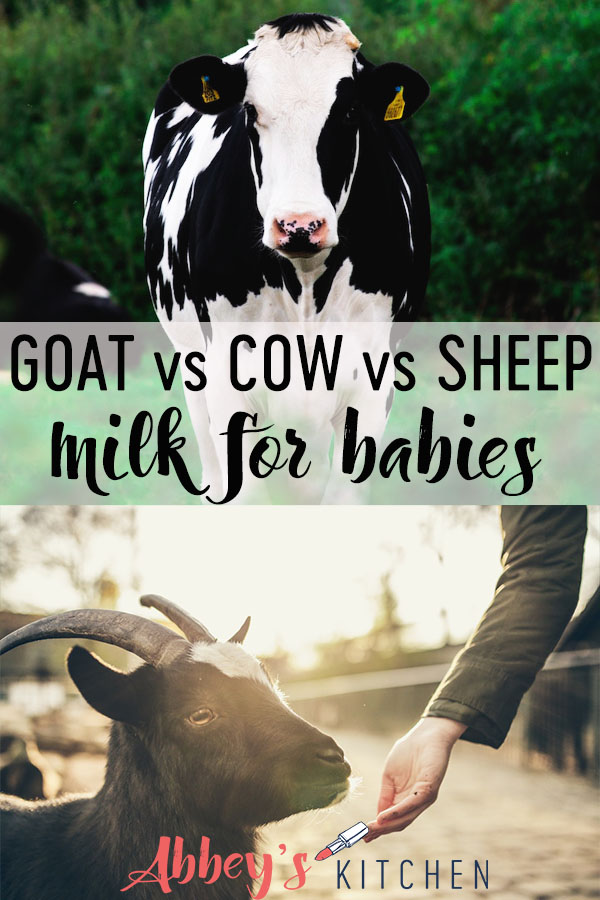
Goat Milk vs Cow Milk vs Sheep Milk for Babies | Does Dairy Cause Colic, Allergies & Disease? - Abbey's Kitchen
Costas Papaellinas Organization ZEFKIS - Costas Papaellinas Organization
Marketing of infant milk in the UK: what do parents see and believe?
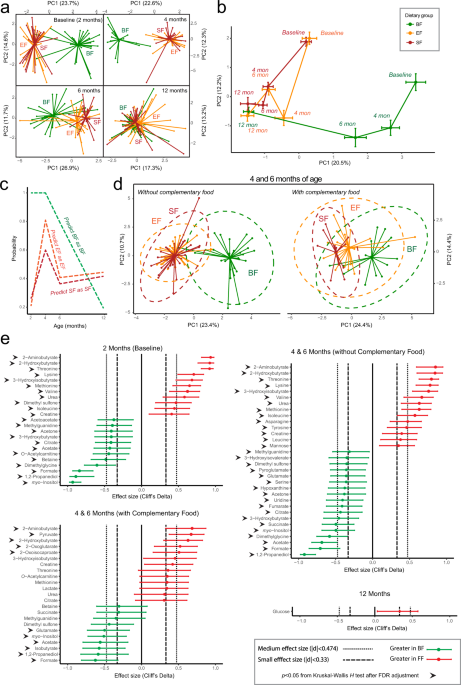
Metabolic phenotype of breast-fed infants, and infants fed standard formula or bovine MFGM supplemented formula: a randomized controlled trial | Scientific Reports

Goat Milk For Babies: When To Give And What Are Its Benefits
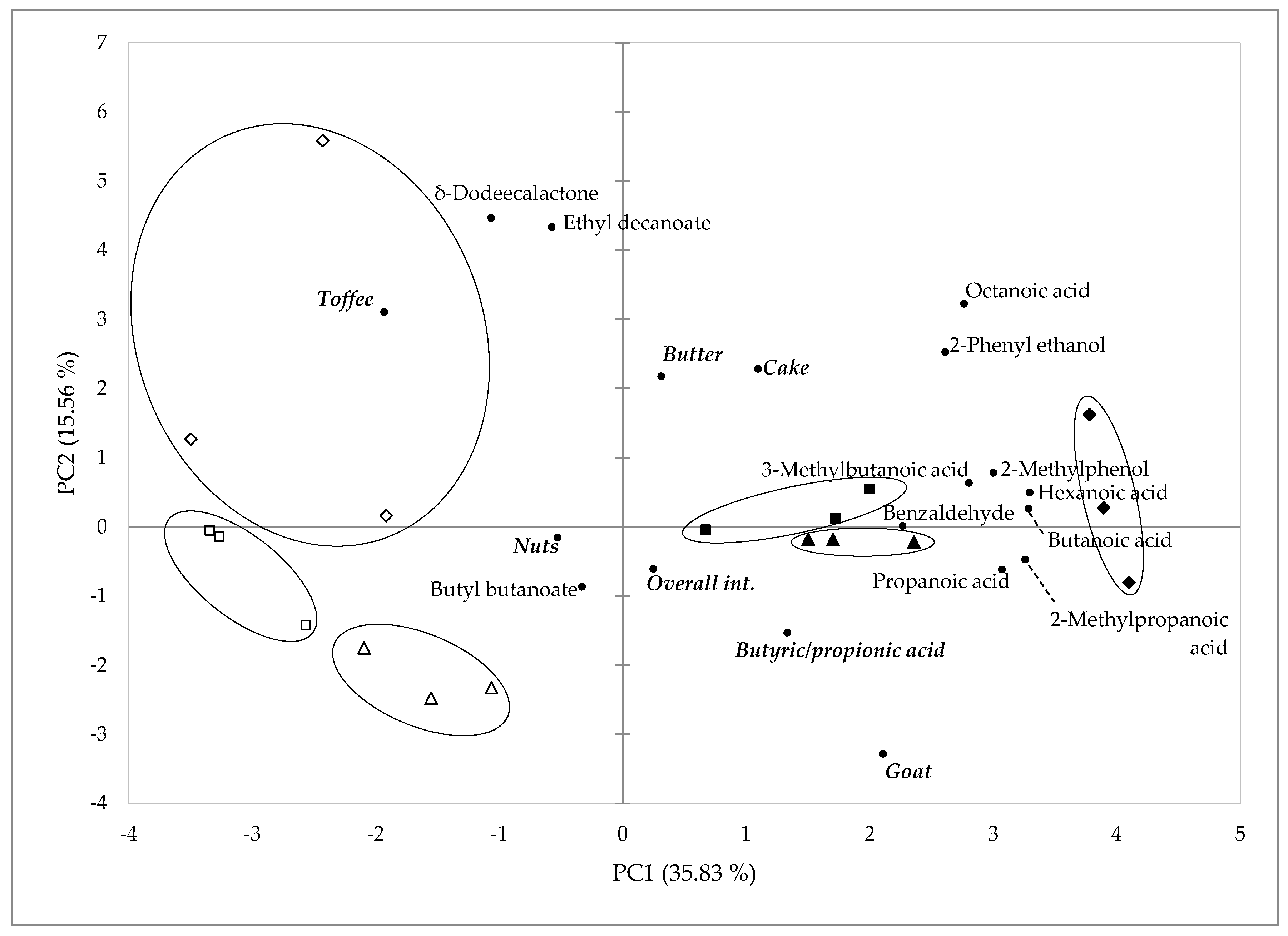
Foods | Free Full-Text | Effect of Citrus By-product on Physicochemical Parameters, Sensory Analysis and Volatile Composition of Different Kinds of Cheese from Raw Goat Milk | HTML
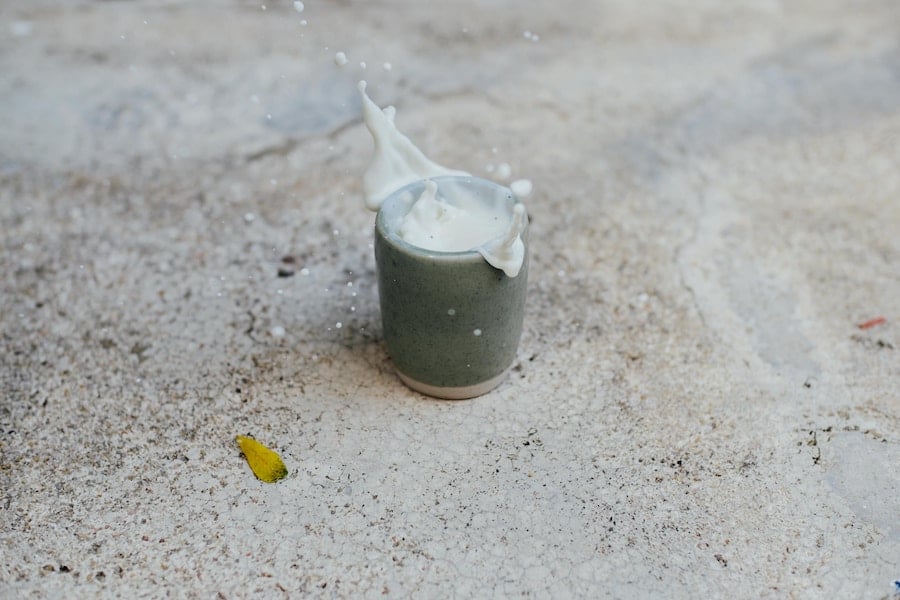
Goat Milk vs Cow Milk vs Sheep Milk for Babies | Does Dairy Cause Colic, Allergies & Disease? - Abbey's Kitchen

Occurrence, sources, and pathways of chemical contaminants in infant formulas - Pereira - 2020 - Comprehensive Reviews in Food Science and Food Safety - Wiley Online Library

Mary Rose Tully - Wikipedia
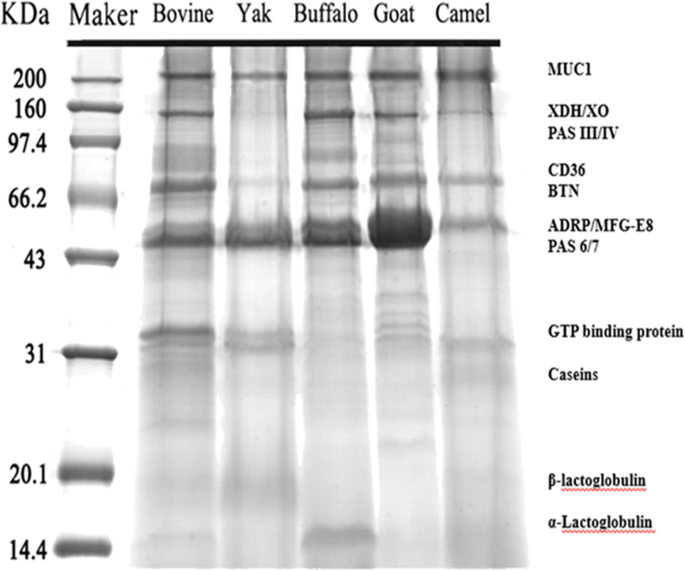
Goat and buffalo milk fat globule membranes exhibit better effects at inducing apoptosis and reduction the viability of HT-29 cells | Scientific Reports

Goat Milk vs Cow Milk vs Sheep Milk for Babies | Does Dairy Cause Colic, Allergies & Disease? - Abbey's Kitchen
Appendix B: Abstracted Recommendati | Feeding Infants and Children from Birth to 24 Months: Summarizing Existing Guidance | The National Academies Press

Foods and Beverages for Infants and Toddlers | 2015-06-10 | Prepared Foods
Costas Papaellinas Organization ZEFKIS - Costas Papaellinas Organization

Nutritional and Health Profile of Goat Products: Focus on Health Benefits of Goat Milk | IntechOpen

Goat Milk vs Cow Milk vs Sheep Milk for Babies | Does Dairy Cause Colic, Allergies & Disease? - Abbey's Kitchen

Goats milk is inappropriate for infants due to its low content of a iron b | Course Hero
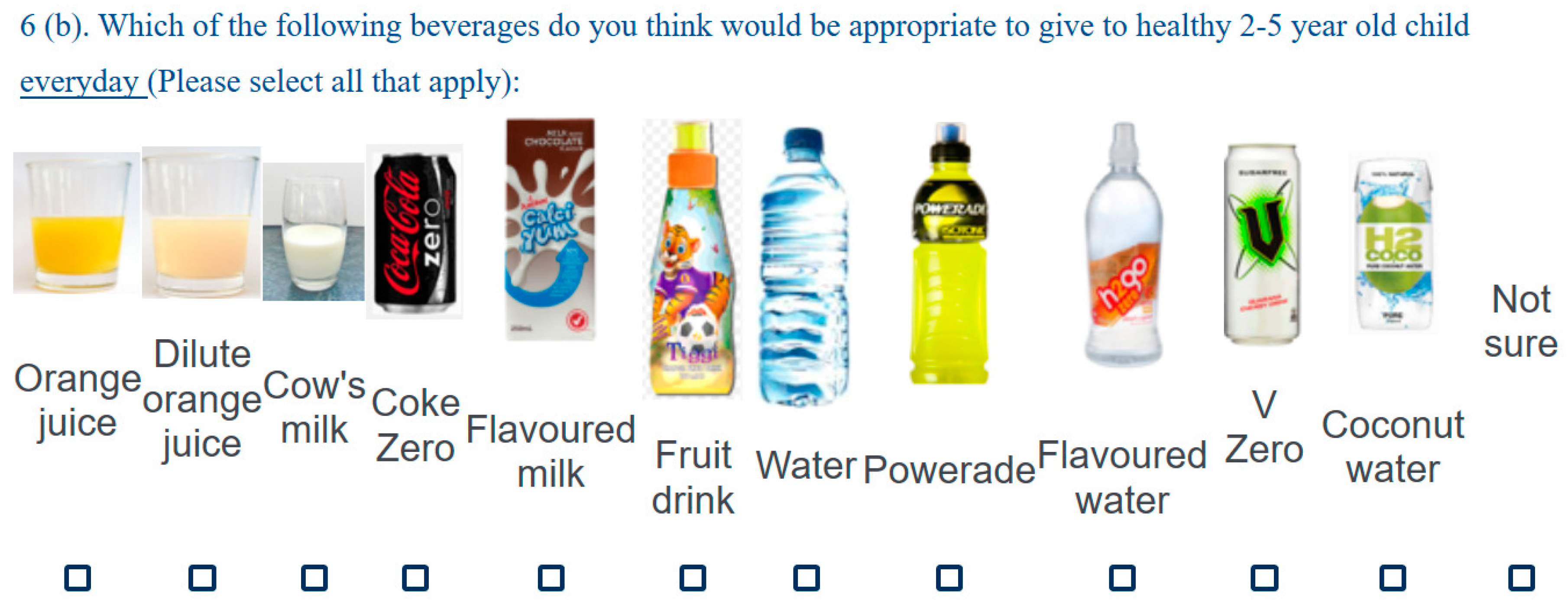
Nutrients | Free Full-Text | Nutrition Knowledge and Perspectives of Physical Activity for Pre-Schoolers amongst Early Childhood Education and Care Teachers | HTML

Estimating daily intakes of manganese due to breast milk, infant formulas, or young child nutritional beverages in the United States and France: Comparison to sufficiency and toxicity thresholds - ScienceDirect
Commercial foods
Posting Komentar untuk "goat's milk is inappropriate for infants due to its low content of"